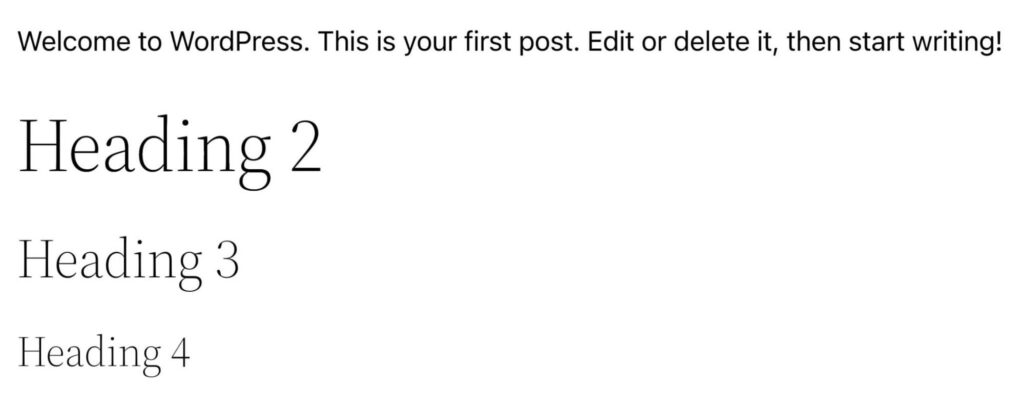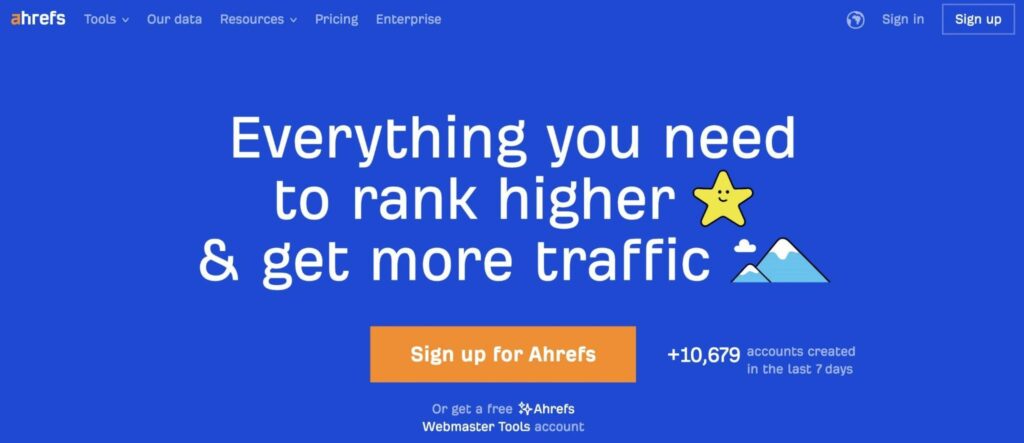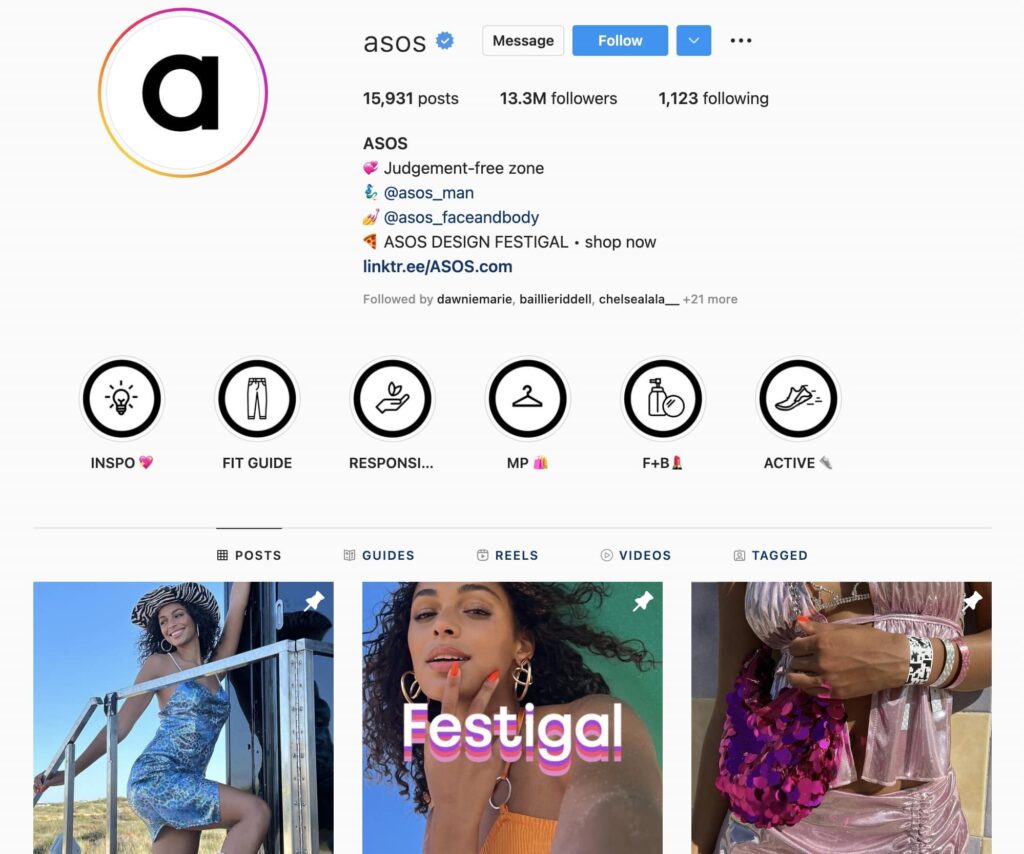Search Engine Optimization (SEO) is a complex and ever-evolving field that can certainly be confusing for beginners — and understandably so. With over 200 ranking factors and new “rules” being added by search engines all the time, it can be tough to know where to start.
Well we’re here to shine the light on the situation for you. You see, there are two main “categories” of SEO — on-page and off-page. One refers to things you can directly control such as optimizing your website’s title tags and headings, while the other refers to external signals such as others linking to and sharing content from your site.
When you understand the foundations of these distinct optimization types, you’ll be able to develop a comprehensive and balanced SEO strategy. Knowing how to cover all your bases, from image optimization to link building, can help ensure your site’s organic search success.
In this complete guide, we’ll introduce you to SEO basics and explain the difference between on and off-page SEO. Then, we’ll share different ways you can improve both to boost your site’s rankings. Let’s get started!
Why SEO Is Important for All Websites
Before we get into the specifics of on-page and off-page SEO, let’s discuss the importance of search engine optimization more broadly.
On a daily basis, the average online user will conduct a wide variety of searches on the web. From looking up directions to the nearest shoe store, to learning exactly how many steps are in the Eiffel Tower, most of us turn to the search bar as a reflex. In fact, more than 50% of online traffic comes from organic search.
When it comes down to it, SEO is so important because all websites have the same goal – to be found and seen. A web page’s search rankings have the power to drive traffic, generate leads, and boost conversions. Therefore, SEO is relevant to almost every aspect of your online marketing strategy.
The Difference Between On-Page and Off-Page SEO
Now that we’ve covered the SEO basics, let’s dive into the differences between on-page and off-page SEO.
What Is On-Page SEO?
Also known as ‘on-site SEO’, on-page SEO is pretty self-explanatory. It refers to all the page ranking factors you can manipulate or optimize on your website. These elements can include the content on your product and service pages, blog posts, landing pages, and microsites.
On-page SEO encompasses title tags, meta descriptions, heading structure, content, image optimization, accessibility, and overall website performance.
What Is Off-Page SEO?
As you might expect, off-page SEO or ‘off-site SEO’ includes all page ranking factors beyond your website.
For instance, ‘backlinks’ (or ‘inbound’ links) are links on other web pages that direct back to your website. When your site has lots of backlinks from credible sites, they can benefit your search rankings because these pages can pass on some of their authority to you.
This is a classic example of off-page SEO, but there’s more to it. Off-page SEO is not as straightforward as on-page SEO. However, it includes concrete SEO strategies for social media, domain authority, and more.
10 Ways to Improve On-Page SEO
It’s time to go into more detail for on-page SEO. Here are 10 factors to consider when optimizing your web pages for SEO!
1. Create High Quality Content
Creating high quality content is one of the most effective strategies for boosting your chances of appearing higher on Search Engine Results Pages (SERPs). After all, Google’s algorithms are designed to provide users with only the best and most relevant content.
Keep in mind that quality includes everything from appearance to practicality. Your ultimate goal should be to create visually appealing, accurate content that will serve a useful purpose.
For instance, if you are starting a blog, you might want to make sure you have a clear niche and stick to it. That way, you can work on growing your knowledge and establishing credibility in your subject area:

Similarly, you’ll want to produce new blog posts regularly because readers and Googlebots alike favor fresh content. You may also want to develop a brand style guide and reference it when creating new content. This way, your audience can feel reassured by consistency.
Calls to Action (CTAs) are also vital if you want your content to inspire your readers to make a move. Other indicators of high-quality material include images and reader-friendly text, but we’ll dive more into those later.
2. Use Target Keywords
Using target keywords on your page is one of the most straightforward SEO tactics you can implement. However, you’ll need to consider your intended audience before you can find target keywords.
For example, if you run a craft blog, your ideal reader might be parents of children under 12. You could hone it down further to parents in the Pacific Northwest. Once you know your audience, you can find target keywords using tools such as Google Keyword Planner.
You can start by introducing keywords that you anticipate your target audience may use. Then, see what similar words and phrases are produced. Choosing keywords with high monthly search volumes but low to medium competition is often best.
It’s also wise to choose a diverse range of keyword types and lengths. For example, you may decide to use some shorter, medium-competition words. On top of that, you could select some lengthier keywords that are highly specific. These are called ‘long-tail keywords.’
For example, if you run a candy store in Wisconsin, you might choose ‘candy shop’ and ‘candy store’. Then, for long-tail keywords, you could use ‘best candy shop in Milwaukee’:


Once you have your keywords, you can place them anywhere on your site. You can add these phrases to blog posts, your About Us page description, product details, and anywhere else you like. However, you’ll want to avoid keyword stuffing.
Essentially, you can use keywords anywhere you see text on the front end of your site. We’ll get into less visible locations for keywords later.
3. Optimize Images
Users prefer high-quality images, and search bots favor lightweight, SEO-optimized ones. Let’s consider a few ways you can ensure your photos are helping your search engine rankings.
To start, it’s best if images are clear and high-resolution. Beyond that, you can compress image files so they are not large and heavy. Whenever possible, you may want to use a compression tool such as TinyPNG:

This free tool enables you to shrink down PNG, JPG, and WebP files so that they don’t slow your site’s loading times (more on this later).
Another simple way to optimize images is by adding ‘alt text’ (alternative text). Simply put, alt text is a summary of an image that users on the front end can’t see. It serves two essential purposes.
Firstly, alt text increases your site’s accessibility by enabling users with impaired vision or complete loss of sight to interact with images. Assistive technologies (such as dictation tools) can help some visitors listen to the descriptions of your visual media files. Furthermore, bots can’t see pictures, but they can read the alt text.
How you add alt text will depend on the Content Management System (CMS) you use. With WordPress, the process is simple. When editing your site in the Block Editor, just select the block for an image and find Alt text in its settings. Here, you can easily type in a brief image description and input some relevant keywords.
4. Create Internal Links
Whether you run a blog or a multi-page website, you will likely deal with many unique links. An ‘internal’ link is a URL that leads to another page on your website. For instance, you may have a footer with links to your blog, contact page, and other essential information.
When creating your web pages, it’s a good idea to include internal links wherever possible. Of course, this process should always be done naturally. These internal links are crucial because web crawlers use them to jump from page to page while scanning information.
In fact, if one of your web pages doesn’t have any internal links leading to it, it’s considered an ‘orphan page’. Search bots can’t find it. Therefore, it can’t be indexed, and it definitely can’t be ranked.
Furthermore, internal links can keep users on your website for longer. This increased time on page may lead to conversions, lead generation, and more. Lastly, and most importantly, internal links help provide a positive UX.
For instance, in a blog post explaining a complex subject, it might make sense to link to another one of your articles elaborating on a related concept. Additionally, internal links can help users navigate around your site as they search for specific details, such as contact information.
5. Optimize Permalinks
While we’re on the subject of URLs, let’s discuss permalinks. These are the permanent URLs that represent your pages, and they are also crucial for strong SEO.
When creating new pages, you’ll want to ensure that your URLs are straightforward and intuitive. For example, if your domain is mywebsite.com, your other pages might have URLs like mywebsite.com/about and mywebsite.com/contact.
If you run a blog, your URLs may need to explain more complex information, but remember to keep things simple.
For instance, for an article titled “How to Declutter Your Bathroom in 10 Simple Steps”, using the full title would be too lengthy. Instead, you could use mywebsite.com/declutter-bathroom-guide.
Using concise permalinks is best. In fact, certain ‘stop words’ (prepositions, articles, connectors) are ignored by search engine bots. Therefore, they should be left out. It’s also wise to include any relevant keywords in your permalinks.
6. Consider Readability
Whether your content is brief or lengthy, readability is an important ranking factor. Your articles and pages should be well-written. It’s best to write directly and concisely, using shorter sentences and vocabulary that fit your audience.
Additionally, you can use headings and subheadings to organize your content. These elements are essential if you’re producing lengthy how-to guides or listicles:

Headings also create more opportunities to insert relevant keywords. Furthermore, you’ll want to ensure that sections are neither too short nor too lengthy. Quality content tends to be skimmable without large blocks of text. You can also use those high-quality images we mentioned before to break up the text.
7. Utilize Title Tags and Meta Descriptions
Meta tags are bits of HTML code that signal to search engines how they should read your content.
Title tags and meta descriptions are examples of these, and key for helping search engines understand how to rank your website’s content. These meta tags generate information that will appear to users in the search results and might encourage them to click on your page.
Here’s an example of a title tag:

Now let’s look lower down the page to see a meta description:

These elements are critical if you want to boost your search engine rankings. Without them, your page’s content will be advertised with a chunk of the first paragraph on the page. Furthermore, web users will have a hard time navigating back to your page when using multiple tabs in their browser.
To easily add title tags and meta descriptions to your posts, you might want to try out a free WordPress SEO plugin. Yoast SEO and All In One SEO (AIOSEO) are popular choices.
8. Monitor Site Performance
Site performance also plays a crucial role in search engine rankings. Here, we’re mainly talking about speed.
As you can imagine, users looking at the search results don’t want to be led to pages that are slow or don’t work correctly. In fact, Google has created what it calls Core Web Vitals. It assesses page loading times, interactivity, and page stability to give you a Core Web Vitals score.
If you’d like to check how your site performs, you can test it using tools such as Google PageSpeed Insights:

Simply enter your website’s URL and see how it does. If your site needs some performance improvements, you can try implementing caching or lazy loading. Even better, you could ensure that your web host uses a Content Delivery Network (CDN), though this may require changing hosts.
9. Prioritize User Experience (UX)
As we approach the end of our on-page SEO strategies, it’s time to discuss UX. This concept is behind most other optimization tactics because the ultimate goal is to make a website more user-friendly.
On top of quality, performance, readability, and strong internal linking, there are a few more specific ways to create a positive UX for your site’s visitors.
A huge part of UX is linked to usability. Therefore, smooth navigation is particularly important.
To make exploring a multi-page website easier, it’s best to use a prominent navigation menu either at the top or left of your page:

Additionally, you may want to create a search bar feature and include helpful links in your footer. All these elements help users navigate around your site without scrolling.
10. Optimize Pages for Mobile Devices
Last but not least, if you want your pages to rank at the top of the search engine results, they must be mobile-optimized. This is because most internet users prefer to use their smartphones or other handheld devices.
There are currently more than 4.9 billion mobile internet users globally, and the number is growing. Therefore, it’s no surprise that Google declares mobile-friendliness a must for SEO. Plus, with the rise of m-commerce, any online businesses that neglect their mobile visitors are likely to miss out on significant sales.
There are a few very simple ways to ensure your website is mobile-optimized. For starters, you can opt for a mobile-friendly WordPress theme. That way, you can set it and forget it.
If you expect to customize your site extensively, you may want to use a WordPress page builder that has mobile previewing and modification settings:

Beaver Builder is a popular choice that offers responsive designs and editing features. It’s also easy to use with a drag-and-drop interface.
How to Improve Off-Page SEO (3 Essential Techniques)
Now that you know everything about on-site SEO, let’s explore how you can improve your rankings by other means. Keep in mind that the following section is briefer, simply because you have more control over on-page than off-page SEO.
1. Build Backlinks (Domain Authority)
Backlinks to your site show Google that your content is credible. That’s why building backlinks can enhance your website’s ‘domain authority’. Your site accumulates a positive reputation through how many backlinks it has.
Gaining backlinks takes time and quality content, but you can use some measures to actively participate in the process. For instance, you can write guest posts for other credible blogs in your niche and link to your content
You can also monitor your site’s mentions online and request that any unlinked instances be credited. Furthermore, some common formats that get linked to include how-to guides, “best of” listicles, and even infographics.

You’ll want to be careful not to participate in anything shady when building your inbound links because you can be penalized by Google. Since backlinks require time and effort, we recommend using tools such as Ahrefs, which has a backlink checker.
2. Support Social Proof
Another way to build trustworthiness is to provide simple evidence. ‘Social proof’ typically refers to things like reviews and testimonials.
You can create a Google Business Profile for your company or website to gain social proof. This platform has a review feature built-in:

Other types of content marketing can also serve as social proof. For instance, conducting a survey and then publishing your findings is excellent evidence of your legitimacy and professionalism.
Additional forms of social proof include testimonials and partnerships with other credible brands or individuals. For example, some companies collaborate with influencers in their niche to build more social proof.
3. Grow Your Online Presence on Social Media
On the subject of influencers, social media is perhaps one of the most important channels where e-commerce businesses can further build their off-page SEO.
That’s because you can share quality content on any social media platforms you use. This material can include stunning images, target keywords, and links:

Ultimately, social media is the place to build a brand, so we recommend developing an entirely separate (and complementary) social media strategy. All of these efforts will contribute to your off-page SEO because social media posts and pages can appear in search results.
However, you’ll want to consider which platforms your target audience uses. For instance, if you are appealing to millennials, you might want to focus on Instagram. Whereas with a younger audience, you may prioritize creating content for TikTok.
Improve Your Site’s Visibility Using On-Page and Off-Page SEO
Search Engine Optimization (SEO) is a complex and dynamic field. That can make it challenging to get started with both on-page and off-page SEO strategies. However, it’s essential to prioritize these optimization methods to boost your website’s visibility.
When it comes to on-page optimization, you can start small, implementing keywords, internal links, and high-quality content. Later, you can advance to elements such as title tags and meta descriptions. For off-page optimization, backlinks, testimonials, and a strong social media presence are essential.
If you’re a beginner in SEO, you might want to forget the site audits and leave them to the professionals. Check out our DreamHost Pro Services and free up your time to focus on the creative side of your business. We offer specific plans for SEO marketing that will help you rank higher on SERPs. Plus, we have an SEO toolkit to take your site to the next level!

Search Engine Optimization Made Easy
We take the guesswork (and actual work) out of growing your website traffic with SEO.
Learn More
